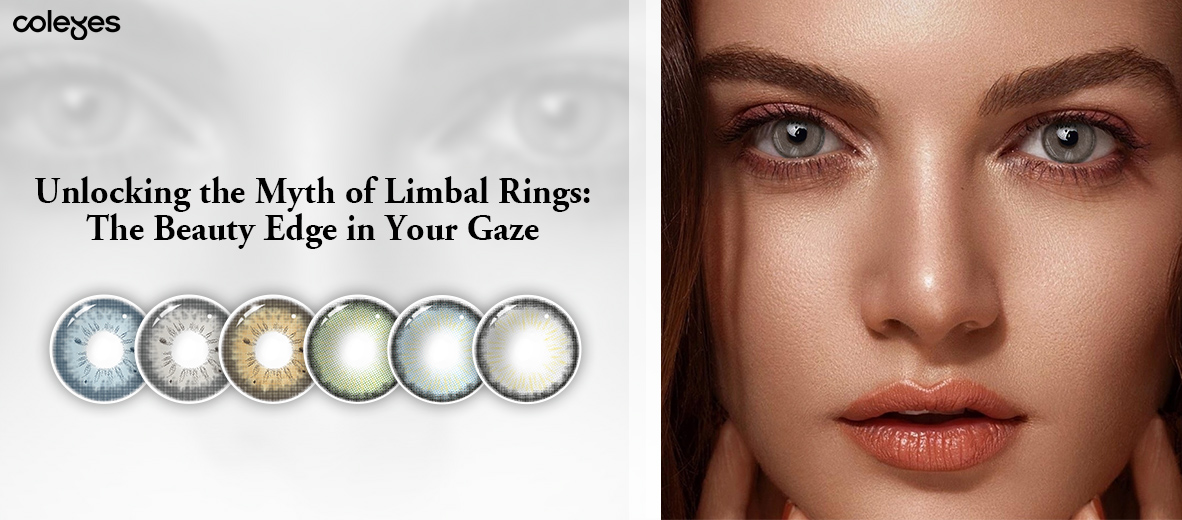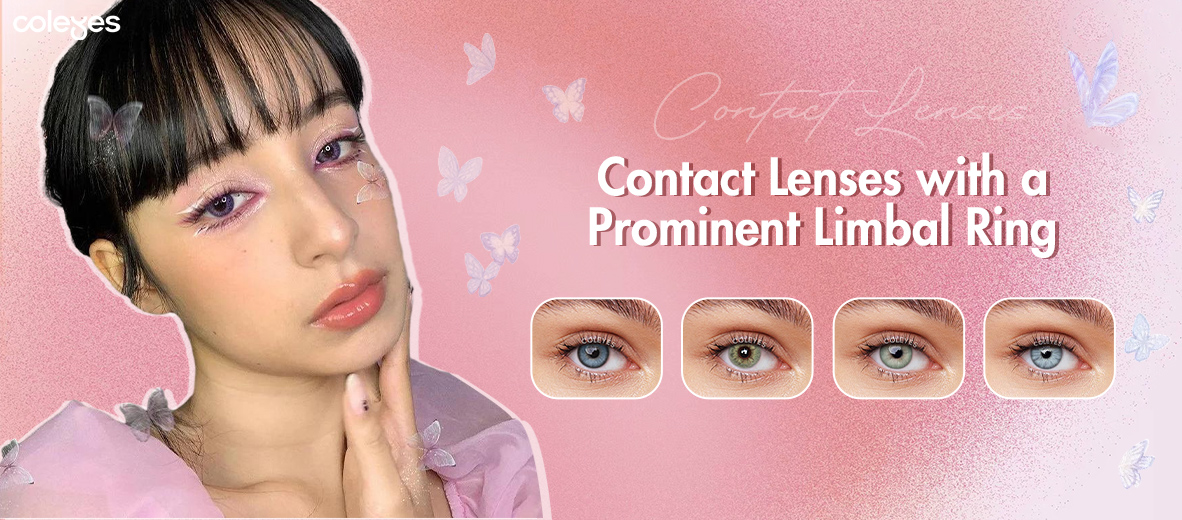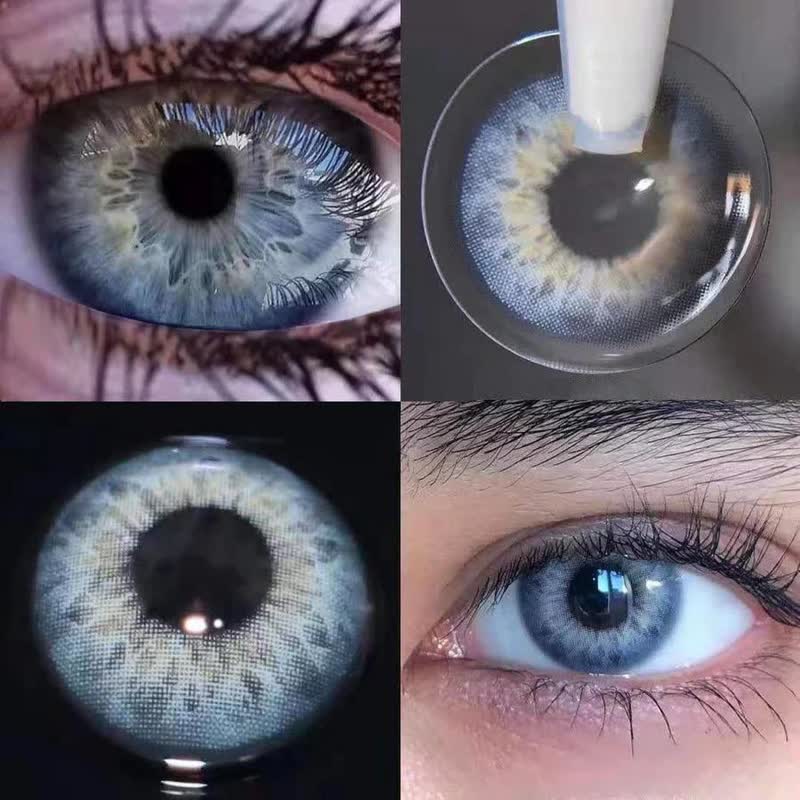Unlocking the Myth of Limbal Rings: The Beauty Edge in Your Gaze
Mar 22,2024 | Coleyes

Are the dark circles around your iris, known as limbal rings, the secret to a youthful and healthy appearance? Discover the significance of these eye-defining features, and unveil how they vary across different eye colors, contribute to attractiveness, and may reflect your health in this comprehensive exploration.
Limbal rings are circular pigment bands around the iris that tend to fade with age; their visibility is influenced by factors like health, age, and genetics, contributing to the captivating appeal of one’s gaze.
Prominent limbal rings are perceived as attractive due to their association with good health and vitality, particularly in mate selection, and their visibility varies with eye color, being more pronounced in lighter eyes and subtler in darker shades.
Enhancing limbal rings is possible with cosmetic contact lenses, offering a range of designs to amplify their visibility and increase the aesthetic appeal of the eyes, with specific styles for different eye colors and desired effects.
Decoding the Mystery of Limbal Rings
Limbal rings are circles of pigment around the iris, forming a black outline where the cornea meets the sclera, often referred to as dark circle. Almost everyone is born with limbal rings, illustrating their prevalence from birth. As we age, these rings typically start to fade, contributing to the changing beauty of the human eye over time, including the appearance of the colored part. This phenomenon can be described as a dark ring around the iris.
Curious about why some people have more visible limbal rings than others? You’re in good company. Donald Sacco from the University of Southern Mississippi has delved into this inquiry. His research highlights that the visibility of limbal rings can be influenced by several factors, including age, health, and genetic disposition. However, one thing is clear: the darker the limbal ring, the more captivating the gaze.
The Science Behind Why We Find Limbal Rings Attractive
Why do we find prominent limbal rings so attractive? Studies show that limbal rings augment facial attractiveness and are associated with the perception of good health, being rated higher in healthiness. Visible limbal rings may indicate an ideal short-term mate choice, emphasizing their role in perceived health and attractiveness.
Intriguingly, health perception based on limbal rings seems to have a gender bias - women often perceive faces with dark limbal rings as healthier compared to their male counterparts. This suggests that the appeal of limbal rings may be rooted in evolutionary biology, with women selecting mates based on visual health indicators such as limbal rings, acting as a health cue.
Variations in Limbal Ring Visibility Across Different Eye Colors
The visibility of limbal rings can vary across different eye colors. From the captivating allure of dark rings in lighter colored eyes to the subtler charm in dark brown eyes, and the rarity in green eyes, let’s embark on a journey to explore these variations.
Dark Limbal Rings in Lighter Colored Eyes
In light blue and sea green eyes, limbal rings are particularly pronounced and visible due to the stark contrast with the lighter iris color. This striking contrast enhances their aesthetic appeal, adding depth and intrigue to the gaze.
Notably, lighter-eyed individuals are more likely to retain their limbal rings into adulthood. This could potentially explain why we often associate light-colored eyes with a youthful and vibrant appeal.
Subtler Rings in Dark Brown Eyes
For those with dark brown eyes, limbal rings can be harder to notice, as the color of the limbal ring may blend in with the darker iris pigmentation. However, this subtlety does not diminish their allure. When visible, limbal rings add to the unique beauty of such eyes, providing a captivating contrast that enhances the overall attractiveness.
Despite their less conspicuous nature in dark brown eyes, limbal rings continue to add to the overall attractiveness, enriching the depth of the adorable gaze.
The Rarity of Limbal Rings in Green Eyes
Globally, green eyes are considered one of the rarest eye colors, with only around 2% of the world’s population having this unique trait. This makes them highly sought after and admired. Yet, in this small percentage, limbal rings can still be noticeably visible, adding a distinct contrast that enhances the appeal of the already rare green eyes.
The presence of visible limbal rings in green-eyed individuals adds a layer of uniqueness to their beauty. This unique combination of rare eye color and visible limbal rings makes green-eyed individuals stand out, capturing the attention and fascination of many.
Health Implications of Limbal Ring Characteristics
Replace image.Add from Pixabay, select from your files or drag and drop an image here.
Beyond their aesthetic appeal, limbal rings may also indicate certain health conditions. Darker limbal rings can indicate lower levels of phospholipid accumulation, which is a risk factor for cardiovascular disease. This can serve as an indicator of heart and circulatory system health, as well as the presence of a dark ring, potentially signaling poor health.
Conversely, a light blue or gray ring around the iris, referred to as corneal arcus, may signify a high risk for heart-related conditions such as stroke. Gender-related hormonal differences, with estrogen protecting against cardiovascular disease, may influence why limbal rings do not significantly change health perception in women, whereas in men, darker limbal rings contribute to a healthier appearance.
Enhancing Your Eyes: Options for Amplifying Limbal Rings
For those who wish to enhance the visibility of their limbal rings, contact lenses offer an effective solution. We’ll examine the various methods you can use to enhance your limbal rings and revamp your gaze.
Contact Lenses with a Prominent Limbal Ring
Contact lenses with a prominent limbal ring are designed to enhance the beauty of the eyes by providing a dramatic and bold appearance. Brands like Coleyes’ DNA ll, Love Spell, Crystal, and Himalaya collections are specifically designed to provide a noticeable dark limbal ring, amplifying the natural eye color.
For those looking for a distinctive look such as cosplay or a doll-eye effect, Coleyes offers lenses with a vibrant, pigmented appearance, suitable for achieving these looks. Cosmetic contact lenses can also simulate the appearance of limbal rings for those whose natural rings have diminished over time, restoring the alluring aspect of the eyes.

The Effect of Limbal Ring Contacts on Different Eye Colors
Limbal ring contact lenses can have a transformative effect on various eye colors. For instance, Hidrocor Brown colored contact lenses subtly enhance brown eyes, adding depth with a chocolate limbal ring surrounding a light cocoa pattern.
For those with lighter eyes desiring a moderate change, the grey colored contact lenses with a dark grey limbal ring gently enlarge the eyes. Blue colored contact lenses add a prominent limbal ring and a convincing natural blue hue that blends seamlessly for various eye colors.

The Age Factor: Understanding How Limbal Rings Change Over Time
As we age, the appearance of our limbal rings changes. They are most prominent during youth and generally become less visible as a person reaches their 40s. The thinning and reduced visibility of limbal rings typically begin in a person’s 20s.
Although the prominence of limbal rings may fluctuate with age and health, their fading does not correlate with any particular health conditions and is not a medical concern. This change is a natural part of aging, affected by genetics, and serves to remind us of the fascinating, ever-changing nature of the human eye.
Summary
From their mystery and allure to their variations across different eye colors and health implications, limbal rings are a fascinating feature of the human eye. Whether you’re enhancing them with contact lenses or simply appreciating their subtle beauty, remember that these rings are more than just a captivating visual feature - they’re a testament to the intricate design and the ever-changing beauty of the human eye.
Is it rare to have a limbal ring?
No, limbal rings are not rare. Most people are born with them, and they are particularly noticeable in newborns and toddlers, contributing to their adorable gaze. As individuals age, limbal rings may thin out and become less visible, usually starting in the 20s.
What is the difference between a limbal ring and a no limbal ring?
The difference between a limbal ring and no limbal ring is that a defined limbal ring shows a darker circle around the iris, while no limbal ring means the iris is the same color all the way to the edges.
Why is my limbal ring so thick?
A thick limbal ring is influenced by both iris pigmentation and the optical properties of the eye. It is often associated with youth and health, but may become less prominent with age.
What is the limbal ring used for?
The limbal ring could be a rich source of probabilistic information about youth and health, and a darker limbal ring is often associated with attractiveness and reproductive fitness. These characteristics make the limbal ring important for gaze-dependent social interactions and radiological localization of ocular foreign bodies. Therefore, it serves as a visual indicator of various physical and aesthetic attributes.
What are limbal rings?
Limbal rings are circles of pigment around the iris, forming a black outline where the cornea meets the sclera. They are a natural feature of the eye.



